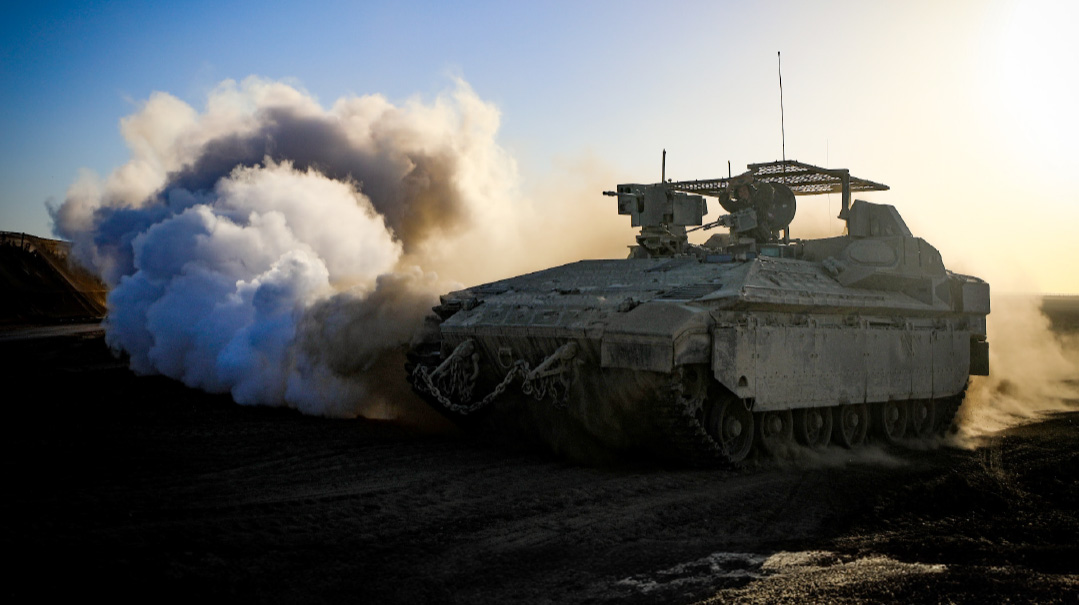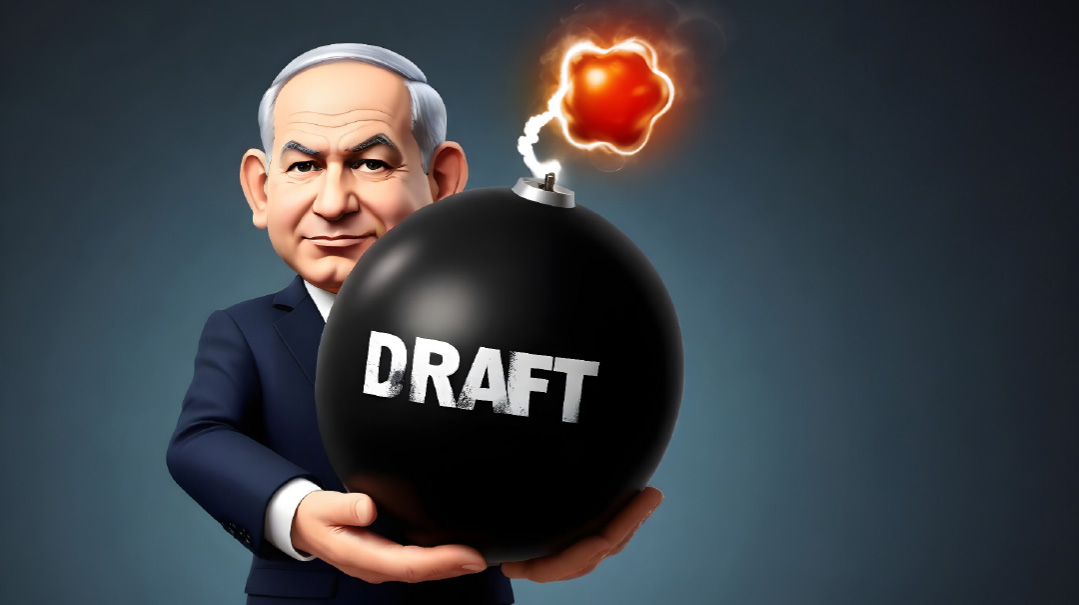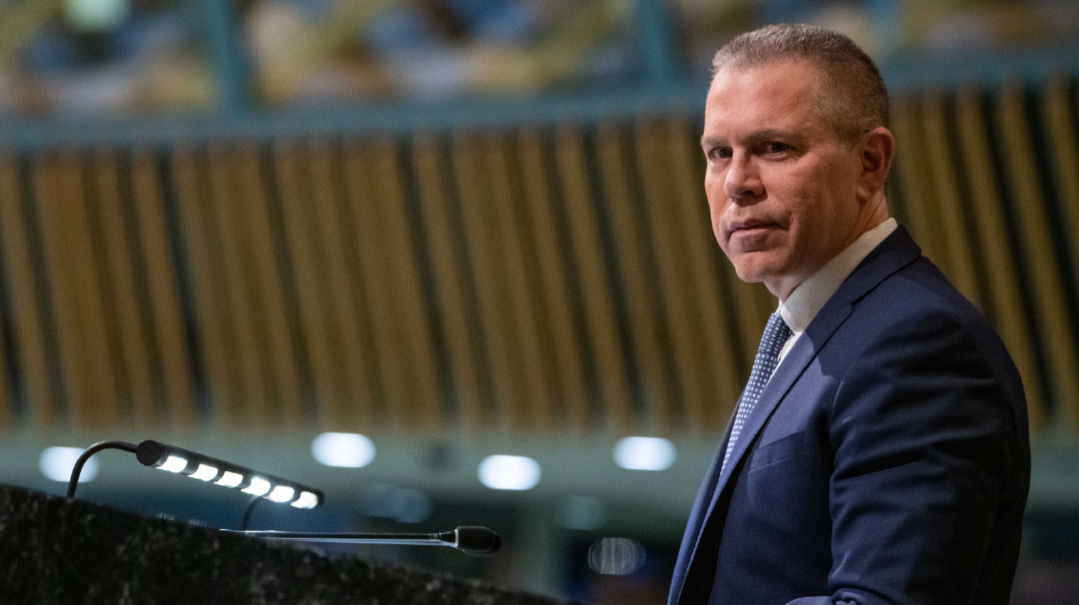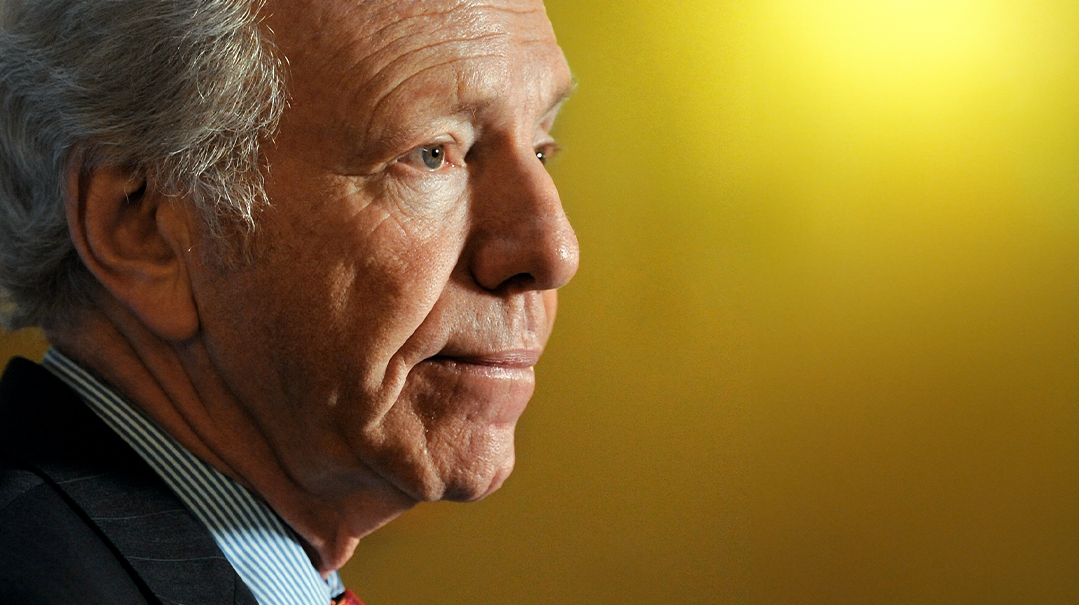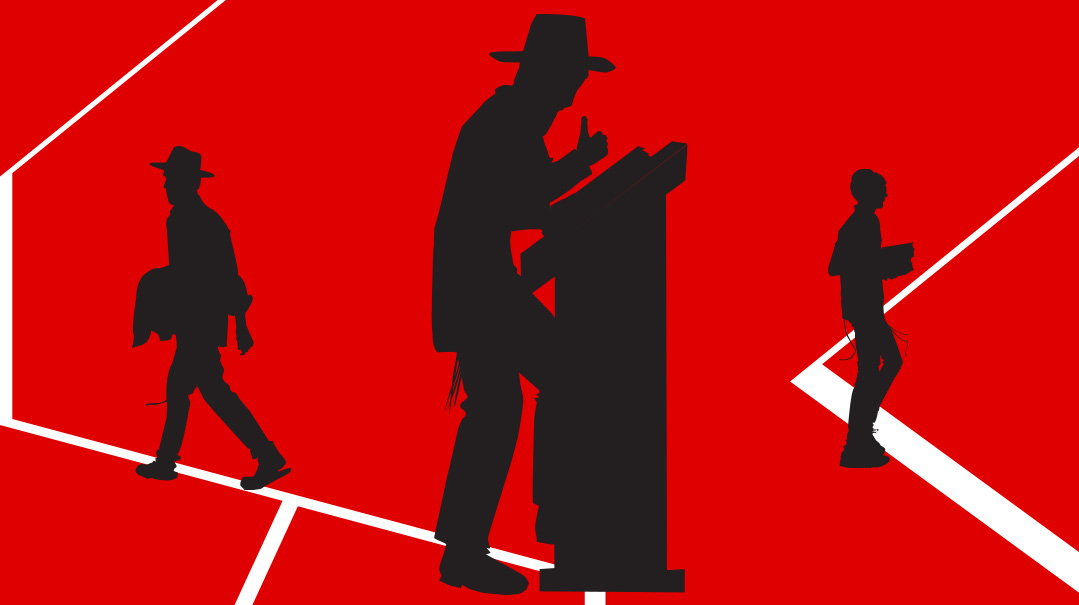Blood Culture
| May 24, 2022After a year of Arab-Israeli violence, an intelligence figure says that only massive resources can fight the sector’s growing extremism
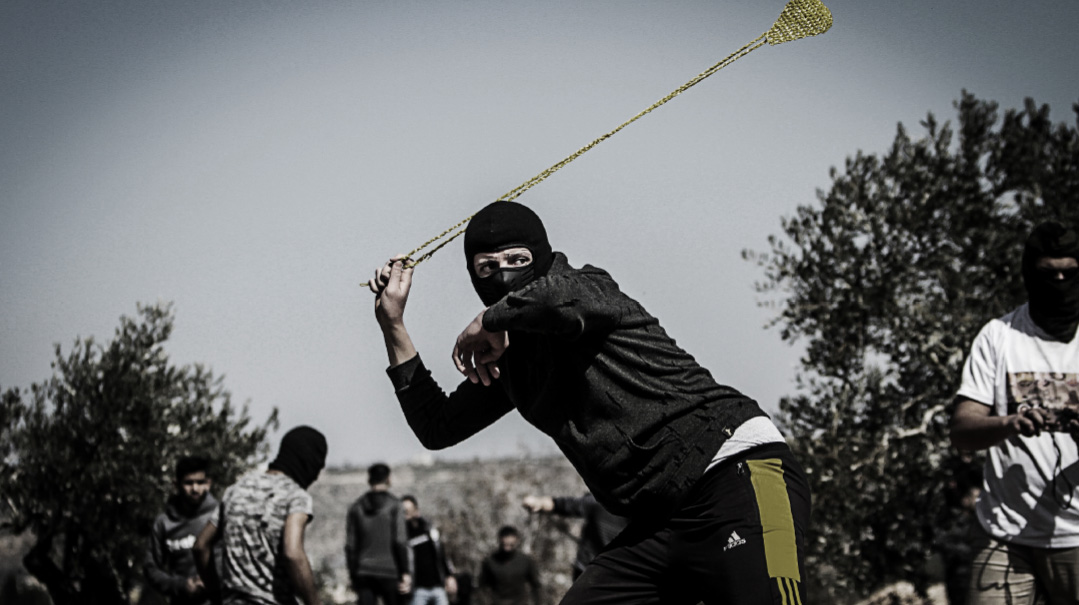
The most picturesque route from Jerusalem to the local council of Meitar, on the southern edge of the Chevron Hills, is also the most dangerous. The hour-and-a-half drive along the road winding along the valley offers views of shepherds tending their flocks beneath the villages dotting the hillsides, and rows of red-roofed houses surrounded by fruit and olive trees. Only the signage in flowing Arabic script reminds travelers that the serenity reflected in these scenes is an illusion.
At my side sits S., a senior official in Aman (short for Agaf Hamodi’in, the IDF Military Intelligence Directorate) and one of the most fascinating figures in the security establishment. His knowledge of Arab society, with all its subdivisions of tribe and clan, is second to no one’s on either side of the Green Line. He dreams in their language, is fluent in its idioms, and is an expert on the different denominations of Islam.
A chance meeting connected us a decade ago. Whenever I’ve needed to pick his brain since then, all I’ve had to do was call him. His grasp of the situation on the ground seems limitless — each village has its story, each sign its translation.
At the outskirts of one village, S. points to the Arab sign indicating its name as As-Samu. He is eager to set the historical record straight: Its original name, it turns out, was Eshtemoa, and it was inhabited by Kohanim in biblical times.
On this day, Israeli Arabs are marking the “Nakba,” their term for the “disaster” of the founding of the State of Israel. Villages such as these figure in the narrative they use to brainwash their young about the expulsion of Arab Israelis following the War of Independence. A longer and more accurate view of history tells a different story: Jews lived here millennia before the Arabs stole the land and murdered its owners.
The neighboring village of El Carmel has a similar past. Biblical Carmel was part of the portion of Shevet Yehudah. It figures in the Tanach during the account of Dovid’s flight from Shaul into the mountains of Chevron. And we’ll see many more landmarks that prove this region bustled with Jewish life long before the fiction of the Nakba.
At a certain stage, the houses dotting the hillsides disappear, and desert sands replace them. The highway is empty. Well, almost. A gray vehicle is speeding directly toward us from behind, apparently trying to force us off the road. With little choice left, I swerve to the shoulder of the road, and the vehicle screeches to a halt ahead of us. One of the passengers steps out and begins walking toward us, until he notices S., who’s in uniform. The threatening figure disappears as quickly as he appeared. The vehicle takes off once again and disappears into the desert horizon.
Things like this occur on a daily basis, S. tells me. The Bedouins break into homes at night and hold people up in broad daylight. Nothing is stopping them. For the most part, these cases result in property loss only. But it’s clear that we haven’t reached the end of the story.
Our trip on this Nakba day highlights the growing link between the Arabs of ’48 and ’67, which is playing out in the recent string of terrorist attacks. Rockets fired from Gaza can be shot down: We have Iron Dome, soon to be complemented by a laser-based air-defense system. Arab Israelis, however, present a more potent threat. And all indications point to a rapidly approaching escalation.
In the ’90s, before and after the Oslo Accords, S. served in the civil administration. He later transferred to the research department in Aman and lent his services to several defense ministers as advisor on Arab affairs. Whenever he raised the nascent threat posed by Arab Israelis — whether to the general staff, the central command, or the Defense Ministry — his concerns were dismissed. “You’re seeing ghosts,” they told him.
The events of October 2000 vindicated his alarm. It started on the second day of Rosh Hashanah, 5761. Two days after the outbreak of the Second Intifada, Arab Israelis swarmed highways across the country, blocking main traffic arteries. It was a volcanic eruption that began on Wadi Ara Road and spread to all the mixed cities: Jaffa, Lod, Acre, and Nazareth.
After several Jews were violently attacked, the police responded with live fire, and 12 rioters were killed. The public outcry led to the establishment of a committee of inquiry under High Court Justice Theodor Or. The committee’s conclusions were a testimony to its members’ ignorance. Its criticism of Northern District commander Elik Ron and his staff led the police to stop even the minimal enforcement it had conducted until then in the Arab sector.
The writing was on the wall already in 2000, but the judges’ virtue-signaling led to culpable neglect — which has continued for over two decades.
S. tells me of one particularly loaded meeting at which he represented Aman, held by Prime Minister Ehud Barak. When it was S.’s turn to speak, he brought up the scenario that the inhabitants of the villages along the path of Route 6 would try to sabotage the mobilization of reservists and make the road impassable to tank carriers.
“I told the prime minister that it would take just 10 men with pickaxes to dig a trench of 40 centimeters, and not one tank carrier would be able to pass.”
In fairness to those present, the road in question had only just become operable along a small part of its route at that time. Maybe that was the reason S.’s scenario seemed delusional to them and was rejected out of hand.
Twenty-two years had to pass. Several weeks ago, the government decided to form several special brigades, a sort of civilian guard, tasked with protecting the main traffic arteries, among other things, with an emphasis on Route 6. It turned out S.’s prediction was ahead of its time.
“If you drive along the road near the Arab villages, you’ll see that the bridge doesn’t have a regular rail, but a rail with a net,” he says. “That’s the result of a lesson learned from the riots of 2000, to prevent rocks from being thrown on passing cars below.
“The prospect of an outburst among Arab Israelis in mixed cities worries the defense establishment much more than rockets from Gaza,” he says.
Sure, it’s concerning, I say, but we don’t exactly see the government carrying out a root canal treatment in the Arab and Bedouin sectors.
“Infighting between the police, the IDF, and the Shin Bet has delayed this from going forward,” he responds. “We’re talking about an enormous budget. In addition, there’s the matter of credit. This leads to infighting between the different branches. I assume that within the coming weeks the political echelon will bang its fist on the table and call everyone to order.”
The Arab Israeli sector, laments our Aman host, is a story of years-long intelligence neglect.
“The main culprit is the Shin Bet,” says S. “Because it’s a relatively small agency and is already stretched to the limit both in Gaza and in Judea and Samaria, it doesn’t have the resources left for Arab Israelis.”
And he explains that the consequences of this neglect are enormous. “Take, for example, the ISIS terrorists who carried out the attack in Be’er Sheva. They weren’t being watched by the Shin Bet, even though it was known that they were affiliated with the group and had been arrested previously. Only after this event did the Shin Bet suddenly start marking suspects: 400 people were identified as first-degree suspects and a few hundred more as second-degree suspects. What happened all of a sudden?”
But the Israeli security establishment is not confined to the Shin Bet; there is also the Israel Police, a much more substantial force. Why can’t police intelligence pick up the slack? S. explains that the police are beset by a different weakness.
“Sadly, knowledge of Arabic is very low in the Israeli police force,” he says. “To produce good intelligence, you first need to speak the language, and no less important, to read intelligence reports in the original text. The police don’t have sufficient manpower. Anyone with some expertise in the Arab world is sent to the intelligence corps. Knowledge is power. When it’s lacking, you’re in trouble.”
A recent case in point: Hours after the terrorist attack in Elad, some cited a speech delivered by Yahya Sinwar, head of Hamas, in which he called for the murder of Jews with axes, among other weapons. The conclusion appeared to be obvious: Sinwar’s inflammatory speech in Khan Yunis was what led to the attack. Some voices began calling for his assassination.
“Yahya Sinwar is a marked man,” S. tells me. “but there’s no connection between his speech and the Elad terror attack.”
I find support for this view in a column by journalist Nachum Barnea, in which he revealed that the terrorists were asked about the speech in question during their interrogation and appeared confused.
S. didn’t have to wait for Barnea’s revelation. “Axes are a recurrent motif in the speeches of Palestinian leaders,” he says. “It’s considered a religious weapon. For example, the perpetrator of one of the recent attacks was found to have on his computer a speech by a religious figure in which he stood on a balcony reading poetry and calling for people to use their axes.
“Anyone who reads Palestinian or Arab media knows that the axe appears side by side with the knife. There’s the Kalashnikov, the knife, and the axe. So it’s normal for them.
“When I had my bar mitzvah, I received a watch. A kid in Yemen will get a dagger. It’s called a shabria — a small, curved knife carried in the belt. In Saudi Arabia, he’ll receive a scimitar. When there’s a quarrel between the clans, the kid is expected to unsheath his weapon and start stabbing. We’re talking about a community with what I call a culture of blood. They see this as legitimate.”
OF course, critics would counter that it doesn’t matter whether the Elad attack was inspired by the Hamas head’s speech; the time is long past due to eliminate Sinwar. S. doesn’t disagree with that goal — but cautions that it should happen in the context of an overall strategy.
“It has to come as part of a broader plan,” he says of a Sinwar assassination. “Egypt has warned that if we do this without sufficient provocation, they’ll stop mediating between us and Hamas.
“That would be very bad, because Egypt’s involvement in our talks with Gaza is vital. So the whole story with Sinwar, with this timing and on this background, was an ill-informed comparison by those who don’t read Arabic on a daily basis. They don’t realize that the word ‘axes’ appears in every other sentence of the Palestinian incitement.
“The Quran itself describes Muhammad butchering the Jews of Khaybar with an axe. There’s also the famous Koran verse: ‘When the Jew hides behind stones and trees, the stones and trees will declare, O Muslims, there is a Jew hiding behind me — come and kill him. ’ I don’t remember the exact words, but I believe mention is made of axes there too.”
And because these images epitomize a culture of blood deeply infused into Islamic society, S. says, the Israeli security establishment needs to be wary even of moderate elements like Mansour Abbas’s Ra’am faction, serving in the government coalition.
“The Muslim brotherhood of which Ra’am is a branch has many shades of opinion,” S. cautions. “There’s the more moderate southern branch, and there’s the northern branch, which openly espouses violence. But in a general way, one can say that even the voters Mansour Abbas represents live in a culture of blood.
“When a Jew is killed in a terror attack, Zaka immediately rushes to the scene to clean up every drop of blood. Why? Because we aren’t permitted to leave a single drop on the scene — it’s a sacred substance that must be buried with the body. But with the Muslims, it’s the exact opposite: When one of their people is killed, they bring his blood-soaked garments to the funeral for everyone to see.
“Do you remember the lynch in Ramallah? What did those murderers do the moment they had thrown the bodies into the street from the upper story? Waved to the crowd with their hands soaked in the blood of the victims.
“In the Muslim sector, young children are taught to butcher sheep by the age of three. On Eid-al Adha, they bring a sheep into the yard and cut its throat in front of their children. Would you do something like that in front of your children? No. This is the society we live next to. If we don’t understand this, we won’t be able to deal with the violence it exhorts.”
It’s been 90 minutes since we set out, and we’ve reached the checkpoint at the entrance to Meitar, where we agreed to stop our tour. We turn around and drive home, contemplating the depressing picture S. has laid before us.
(Originally featured in Mishpacha, Issue 912)
Oops! We could not locate your form.
